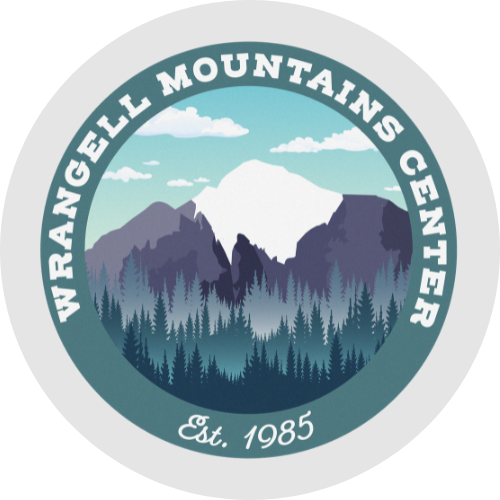We connect people with wildlands through art, science, and education in Alaska
The Wrangell Mountains Center provides residential and walk-in experiential education programs that foster discovery through direct contact with diverse environments. We embrace an interdisciplinary approach composed of analytical, artistic, and scientific modes of perception. We value wilderness both for its own sake and for the powerful direct experience it offers us.
Our Vision
Our vision is to see people and wild places thriving together in a changing world.
The Wrangell Mountains Center strives to facilitate understanding, appreciation, and stewardship of the lands and communities of Wrangell-St. Elias National Park and Preserve. We create opportunities for personal transformation through direct experience with this extraordinary place. Our programs provide students, local citizens, scholars, and travelers with an increased understanding of complex natural processes, a changed view of the human place in the natural environment, and new skills for taking effective action on their own local issues. In the process of helping people come to know the Wrangell Mountains, we are building a strong local, national, and international constituency for the protection of wildlands and the enhancement of mountain cultures in Alaska and beyond.
Our Core values
The board and staff of the Wrangell Mountains Center evaluate past, present, and future institute activities in light of the following values:
Collaboration. We work together with our community, our neighbors and our partners.
Experiential. We empower life-long learning through interdisciplinary, hands-on creativity and discovery
Inclusivity. We offer a safe, welcoming campus that values diversity.
Stewardship. We cherish and understand our region’s natural history and culture traditions.
Sustainability. We responsibly invest in our people and our campus. We strive to model low impact lifestyles.
History and Need
The founding members of the Wrangell Mountains Center began living and teaching in the Wrangells in the 1970s. Since that time, a once little-known landscape of towering mountains and quiet communities has been discovered by an expanding public.
Today, the WMC is the only private education and research-oriented institution in Wrangell-St. Elias National Park & Preserve. Our facility and history predates the designation of the Park, enabling the Wrangell Mountains Center a unique ability to forge links among local communities, park lands, and the general public within the context of scientific and artistic inquiry.
With gateway communities like McCarthy, Kennecott, and Nabesna comprising the primary "Park Experience" for many visitors, our role is critical. The Wrangell Mountains Center provides interpretation of the Wrangells, supplementing the efforts of the NPS, while additionally providing a forum for research and discussion of the region's natural history, aesthetic values, conservation opportunities, community development, and cultural uniqueness and vibrancy.
As public recognition and visitation to the region grows, we continue to build our institutional capacity while offering time-tested and newly-hewn programs that honor our place within one of the planet's most magnificent landscapes. We also strive to respect and protect the unique cultural authenticity of the region and communities that engendered our organization.
Location
Located within walking distance of the Kennicott Glacier, the Wrangell Mountains Center's activities are based in the small community of McCarthy, on private land, within the boundaries of the nation's largest National Park. Known as North America's Mountain Kingdom, Wrangell-St. Elias National Park & Preserve encompasses 13.2 million acres including nine of the sixteen tallest peaks, an active volcano, and many of the continents largest glaciers and rivers. Together with adjacent parks in Canada and Alaska, Wrangell-St. Elias represents one of the world's largest contiguous tracts of protected wildlands -- more than 25 million acres -- and is currently recognized as a United Nations World Heritage Area.
The environs surrounding McCarthy provide an outstanding natural laboratory for students and seasoned researchers alike. In particular, the local landscape invites inquiry into primary successional processes, alpine and forest ecology, spruce bark beetle dynamics, glacial outburst floods, bedrock geology, glaciology, and any number of geologic or geomorphologic processes. Including ecosystems that stretch from cirque to sea, the Wrangell-St. Elias National Park & Preserve is also home to healthy herds of Dall sheep, mountain goat, moose, grizzly bear, black bear, wolverine, caribou, wolf -- a complete array of resident sub-arctic mammals as well as migrating birds and salmon.
While our programs and operations occur squarely in the context of a region of geographic superlatives, the accute uniqueness of our region is defined in no small part by the overlay of a living community on that wild landscape. In a country where close connection with a landscape, or even with one's neighbors, is anything but a given, we are grateful for the meaningful and nuanced relationship between the local community and this landscape. In the wake of the Alaska National Interest Lands Conservation Act (ANILCA) legislation and the establishment of this, and other, national parks in Alaska, we are attentive to and respectful of both our natural and cultural environments here in the Wrangells, and conscious of the dynamic influences of many variables and challenges influencing them.
Banner Photo: Nathaniel Wilder

